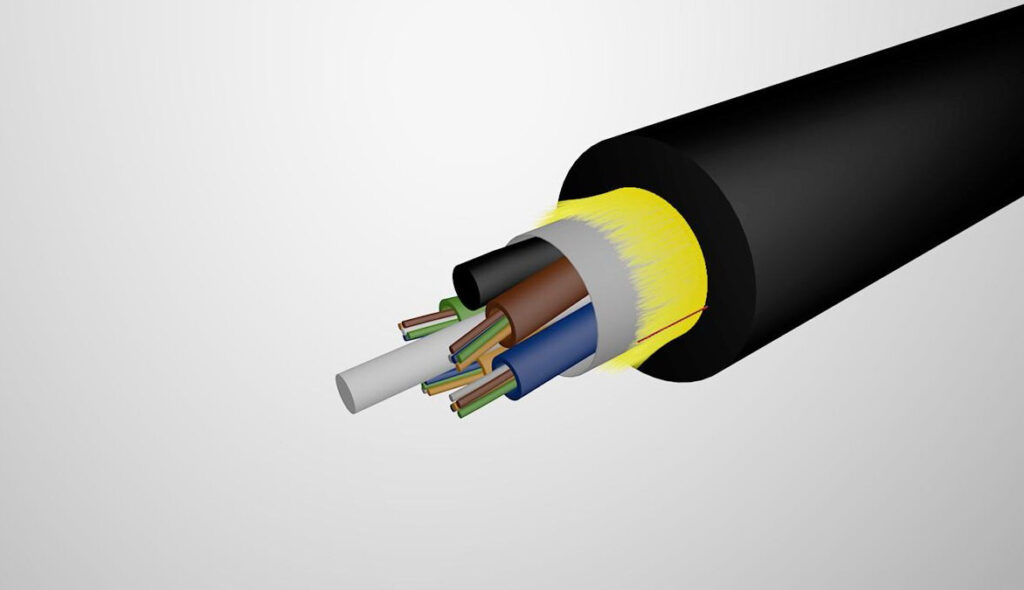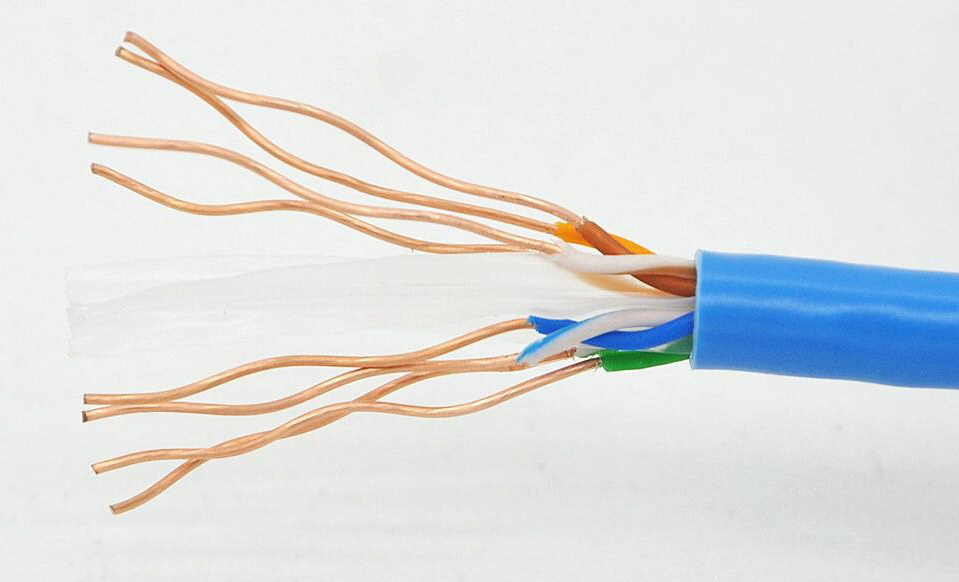Cables using copper conductors propagate electrical signals, while optical fibers propagate optical signals. There are two types of general network access, cable access and fiber optic access. We know that light is faster than electricity in a vacuum. So is fiber optic access to the Internet actually faster than cable access?

Optical signals have a high frequency and fiber optic usually has a wide bandwidth. This allows optical fibers to accommodate more signals to be transmitted simultaneously.
In addition, the signal attenuation in optical fiber is much smaller compared to the electrical signal in copper wire. Moreover, optical signals are more resistant to interference than electrical signals.
According to Shannon’s theorem, the transmission rate is directly influenced by the signal-to-noise ratio. The signal loss of optical fiber is low. This is why the transmission rate of optical fiber is faster than that of cable.
Counting attenuation, relay devices, and electromagnetic wave interference, cable performance will be worse. For example, a commonly used twisted pair cable can only travel up to 100 m. Longer distances require repeaters to continue the signal.
And it can only be used a limited number of times for relaying. Each relay also consumes time. The loss of optical transmission in optical fiber is much lower than the loss of the point in the wire. It typically travels over thousands of meters.
In practical use, fiber optic cable has greater transmission capacity than copper cable. It has a long relay section distance, small size, light weight and no electromagnetic interference.
Therefore, it has now developed into the backbone of wired transmission lines for long-distance trunk lines, intra-city relays, offshore and trans-oceanic submarine communications, and local area networks, private networks, and so on. And it began to develop to the field of intra-city subscriber loop wiring network, providing transmission lines for fiber-to-the-home (líneas de fibra hasta el hogar) and broad generation integrated services.

The difference between fiber optic and copper cable
Fiber optic cables are composed of two or more glass or plastic fiber cores (núcleos de fibra de plástico). Cables, on the other hand, are made with metal as the conductor. Inside the cable is mainly a copper core wire. The core diameter is 0.32mm, 0.4mm, 0.5mm, etc. Usually, the larger the diameter, the greater the communication capacity. While the fiber optic cable is divided only by the number of cores, which are 4, 6, 8, 12, 24 pairs, etc.
Copper cables transmit electrical signals, while optical fibers transmit optical signals. The optical path propagation of fiber optic cable is multiplexed, so fiber optic cable transmits optical signals much faster than ordinary cable transmits electrical signals.
The fastest speed of commercial single laser transmitter single film fiber optic network connection in the world has reached 100 GB per second. at the same time, fiber optic transmission supports connection distances of up to two kilometers or more, making it the best choice for forming larger scale networks.
Compared with copper core cable, fiber optic cable has the advantages of good resistance to electromagnetic interference, high confidentiality, high speed and high transmission capacity. Due to the cost, it is also more expensive. With the progress of the times, the current telecom operators and cable operators have gradually laid 4~12 core fiber optic cable to residential areas as well as commercial areas.